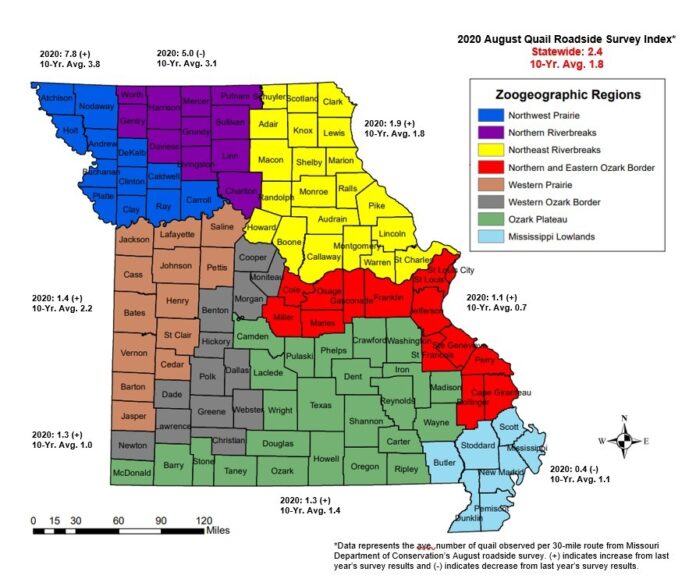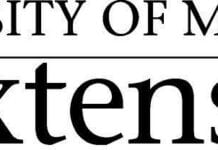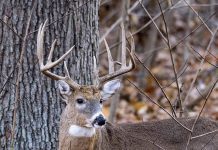
MDC survey shows 2020 quail numbers up from last year, pheasant numbers down.
JEFFERSON CITY, Mo. – With quail and pheasant-hunting season starting Nov. 1, the Missouri Department of Conservation (MDC) advises hunters that quail production appears higher than last year while pheasant production appears lower than last year.
Each August, MDC conservation agents record the numbers of quail and pheasants they see while driving a 30-mile route – called the roadside index. A total of 110 routes are completed around the state. These numbers are then tallied and grouped by eight geographic areas of production – called zoogeographic regions.
“It represents the best way we have to track quail and pheasant populations on a statewide basis,” said MDC Resource Scientist Beth Emmerich, who manages the August roadside survey. “The survey does a good job of tracking large-scale population changes and is a good barometer for how more localized populations may also be doing from year to year.”
According to MDC, this year’s statewide average roadside index of 2.4 quail per route is 33% higher than last year’s index of 1.8 quail per route. An average of 0.2 pheasants was recorded per route, down 33% from last year’s index of 0.3 pheasants per route.
“Most areas of the state showed moderate increases in quail numbers this year,” Emmerich said “The bootheel counties (Mississippi Lowlands) were down quite a bit this year and the Northern Riverbreaks had a slight decline this year, while the six other regions showed decent increases in quail numbers.”
Pheasant numbers were highest in the Northeast Riverbreaks zoogeographic region with 0.5 pheasants recorded per route, followed by the Northern Riverbreaks with 0.3 pheasants per route. The Northwest Prairie region did not record any pheasants this year, compared to 0.3 pheasants per route in 2019.
“Overall mild winter conditions in early 2020 likely contributed to better overwinter survival for birds,” Emmerich said. “While spring began with cool, wet conditions, drier weather prevailed during the nesting season.”
She added that scouting areas for bird hunting is important and habitat is still the key for finding good numbers. “Quail tend to be in areas with diverse plantings such as native grasses and forbs with plenty of shrubby cover.”
Hunting seasons for quail and pheasants is Nov. 1 through Jan. 15, 2021. Youth seasons for both quail and pheasant are Oct. 24-25. The daily bag limit for quail is eight with a possession limit of 16. Daily bag limit for pheasant is two male pheasants with a possession limit of 4.














